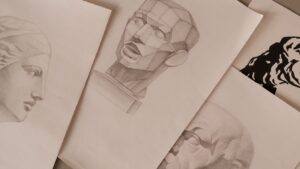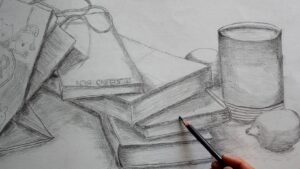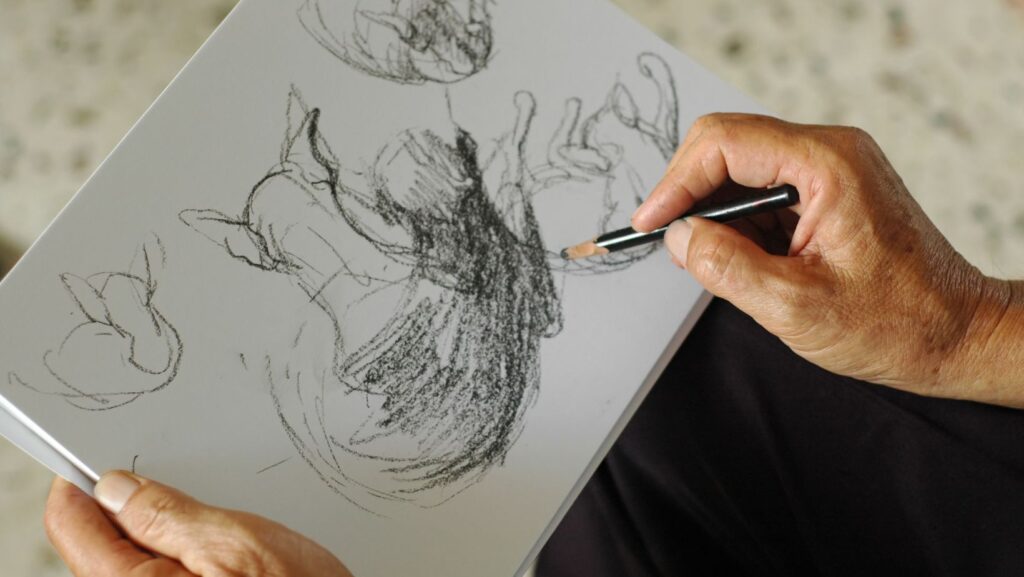In a world brimming with digital creations, sketch art stands as a timeless testament to the power of simplicity and imagination. With just a pencil and paper, artists capture the essence of their subjects, transforming mere lines into expressive forms. Sketch art, often considered the foundation of visual storytelling, allows for the exploration of ideas in their rawest form.
As more people turn to sketching for both relaxation and expression, its relevance continues to grow. Embracing this art form means unlocking a world of creativity and inspiration.
Sketch:7iqr8gn_ipa= Art
 Sketch art encompasses the creation of artwork through simple lines and shapes. Artists practice this form to quickly capture ideas or the essence of a subject. Often, sketch art is completed in a few minutes, highlighting its spontaneous nature. Materials commonly used in sketch art include pencils, charcoal, and ink. These tools help artists experiment with textures and shading.
Sketch art encompasses the creation of artwork through simple lines and shapes. Artists practice this form to quickly capture ideas or the essence of a subject. Often, sketch art is completed in a few minutes, highlighting its spontaneous nature. Materials commonly used in sketch art include pencils, charcoal, and ink. These tools help artists experiment with textures and shading.
In sketch art, abstraction is frequent, as artists focus on conveying movement and emotion. Viewers appreciate sketch art for its raw and unfiltered quality, which often reveals the artist’s thought process. Many find joy in observing these initial stages of creation, as sketch art provides insight into the artist’s mind.
Sketch art serves as both a creative outlet and a developmental step for artists. It’s foundational for developing skills like perspective and proportion. The practice of sketch art helps artists refine their vision, making it an essential component of the broader art landscape.
Tools and Materials for
Sketch:7iqr8gn_ipa= Art
 Essential tools and materials play a critical role in sketch art, facilitating the expression of ideas and techniques. Artists often begin with pencils, offering varying grades of hardness for different shading effects. Charcoal and pastels provide diverse textures and depths, allowing for rich, expressive lines in sketch art.
Essential tools and materials play a critical role in sketch art, facilitating the expression of ideas and techniques. Artists often begin with pencils, offering varying grades of hardness for different shading effects. Charcoal and pastels provide diverse textures and depths, allowing for rich, expressive lines in sketch art.
Paper quality can significantly affect the final piece. Many artists prefer textured or heavy-weight paper, essential for absorbing different mediums like charcoal and ink. Sketch art often utilizes erasers, not just for corrections but for creating highlights and textures through subtractive techniques.
Pen and ink introduce bold outlines and can define finer details. Using sketchpads allows artists to explore ideas on-the-go, preserving each piece’s spontaneous nature. Proper storage ensures these sketches remain protected from elements that can degrade paper quality over time.
These tools and materials empower artists to refine their skills, making sketch art both versatile and deeply personal.
Techniques to Master
Sketch:7iqr8gn_ipa= Art
 Mastering sketch art involves understanding various techniques that enhance creativity and precision. Contour drawing forms the foundation, emphasizing smooth, continuous lines to define edges. Gesture sketching follows, capturing the essence of movement with quick, flowing strokes. Shading and hatching add depth and dimension; artists use cross-hatching to achieve darker tones. Negative space usage highlights focal points by defining shapes through surrounding areas.
Mastering sketch art involves understanding various techniques that enhance creativity and precision. Contour drawing forms the foundation, emphasizing smooth, continuous lines to define edges. Gesture sketching follows, capturing the essence of movement with quick, flowing strokes. Shading and hatching add depth and dimension; artists use cross-hatching to achieve darker tones. Negative space usage highlights focal points by defining shapes through surrounding areas.
Perspective drawing introduces realism by ensuring accurate proportions and vanishing points. Blending with tools like paper stumps softens transitions, creating a cohesive look. These sketch art techniques boost artisanal skills and refine artistic expression. Practicing regularly helps artists adapt these techniques naturally. Exploring different methods in sketch art reveals unique styles, adding versatility to one’s artistic repertoire. Understanding how different elements interplay allows for experimentation and originality. These sketch art skills span from basic to advanced, offering continuous learning and evolution for dedicated artists.
Famous Sketch Artists and Their Influence
Throughout history, many artists have left an indelible mark on the world of sketch art. Leonardo da Vinci’s meticulous studies and expressive sketches have inspired countless artists with their blend of scientific inquiry and artistic brilliance. Vincent van Gogh’s vibrant and emotive sketches reveal the raw energy and passion behind his iconic works. Pablo Picasso’s innovative approach to form and abstraction has shaped modern art, demonstrating the power of sketching as a tool for exploration and innovation. These artists, among others, have not only advanced the art form but have also influenced how sketch art is perceived and valued today. Their legacies continue to inspire new generations, proving that the timeless art of sketching remains a vital and dynamic component of artistic expression.
